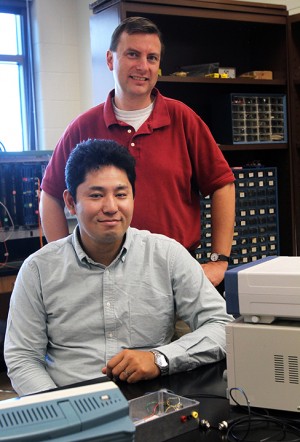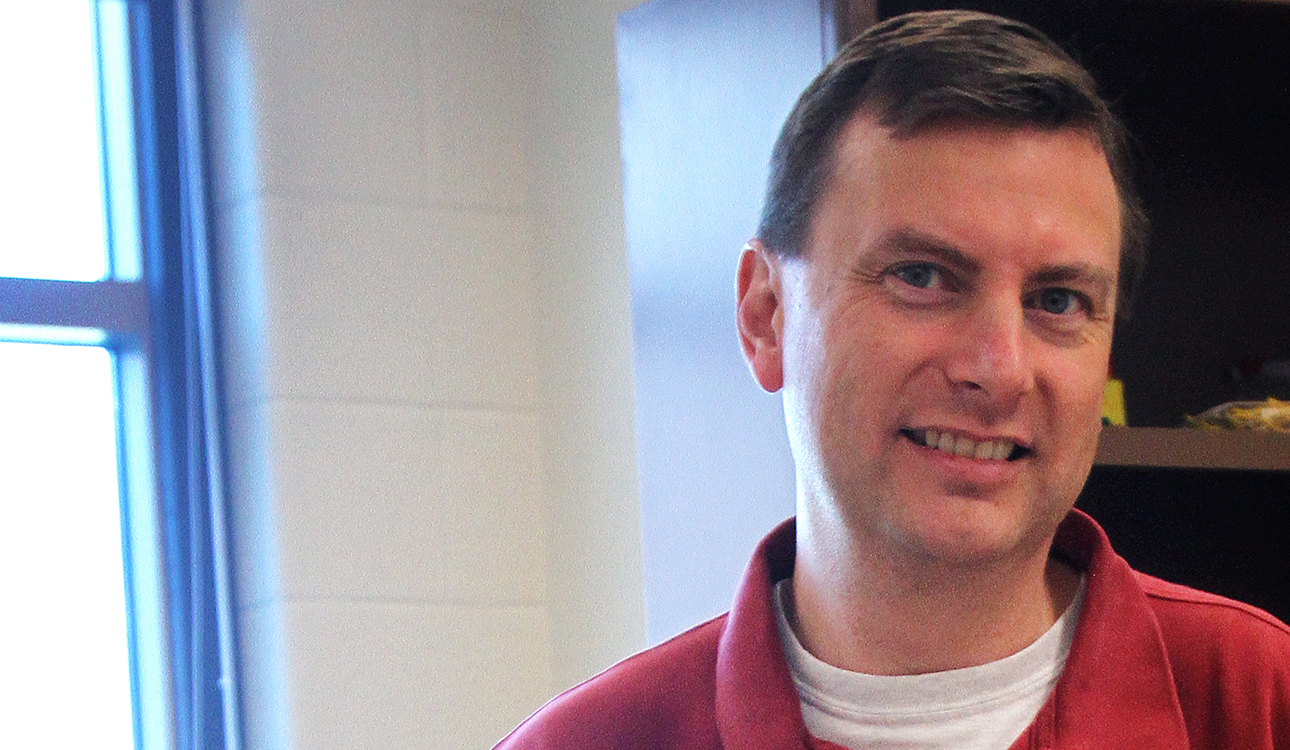
Travis Taylor | Lariat Photo Editor
Reporter
The winners of the 2013 Nobel Prize in physics owe thanks to faculty and students from Baylor’s department of physics for helping confirm the existence of the elusive Higgs boson particle.
The prize was awarded to Dr. Peter Higgs and Dr. Francois Englert, the two scientists who theorized the existence of the particle back in the 1960s and spearheaded the push for its discovery in July of last year, according to the Nobel Prize’s website.
Associate physics professor Dr. Jay Dittman and assistant physics professor Dr. Kenichi Hatakeyama helped discover the Higgs boson by researching and analyzing data produced by the European Organization for Nuclear Research (CERN). Both professors analyzed vast amounts of data resulting from CERN’s Large Hadron Collider and conducted experiments with a particle physics detector known as Compact Muon Solenoid, Dittman said.
“Baylor has been involved in high-energy research with CERN since 2010,” Dittman said. “We have contributed to the CMS experiment, which has really been the frontier of high-energy research concerning the search of the Higgs boson.”
Higgs first theorized the existence of the Higgs boson particle in 1964 as a way to explain how all basic matter in the universe could have formed, and its recent discovery has confirmed nearly 50 years of scientific experimentation, Dittman said.
“The discovery of the Higgs boson is arguably one of the most significant scientific discoveries in decades,” Dittman said. “It’s the missing piece of the universe because it explains how the matter in our universe is able to exist.”
Dittman also said many of Baylor’s graduate and undergraduate students had contributed to the discovery by analyzing data produced by the LHC.
“We in the department of physics were notified by Baylor when the announcement of the Nobel Prize was made,” Dittman said. “We were all very excited.”
The Large Hadron Collider is the world’s largest and most powerful particle collider, a 27-kilometer long ring-shaped structure that accelerates particles and gathers data from particle collisions, according to CERN’s website.
Hatakeyama said he has flown to Europe to take part in CERN meetings and conduct research many times over the past few years.
“I have been going to CERN four to five times a year for the past couple of years,” Hatakeyama said. “Thousands of physicists have been collecting and discussing data from the LHC for years now.”
Houston physics graduate student Brandon Mattingly said the news that Baylor’s professors contributed to Nobel Prize-winning research helps to expand the prestige and prevalence of Baylor’s department of physics.
“You can already see more first years coming to Baylor to major in physics, and I believe part of that is due not only to the work on the Higgs Boson done by Dittman and Hatakeyama, but also by graduate and undergraduate students involved in the research,” Mattingly said.






